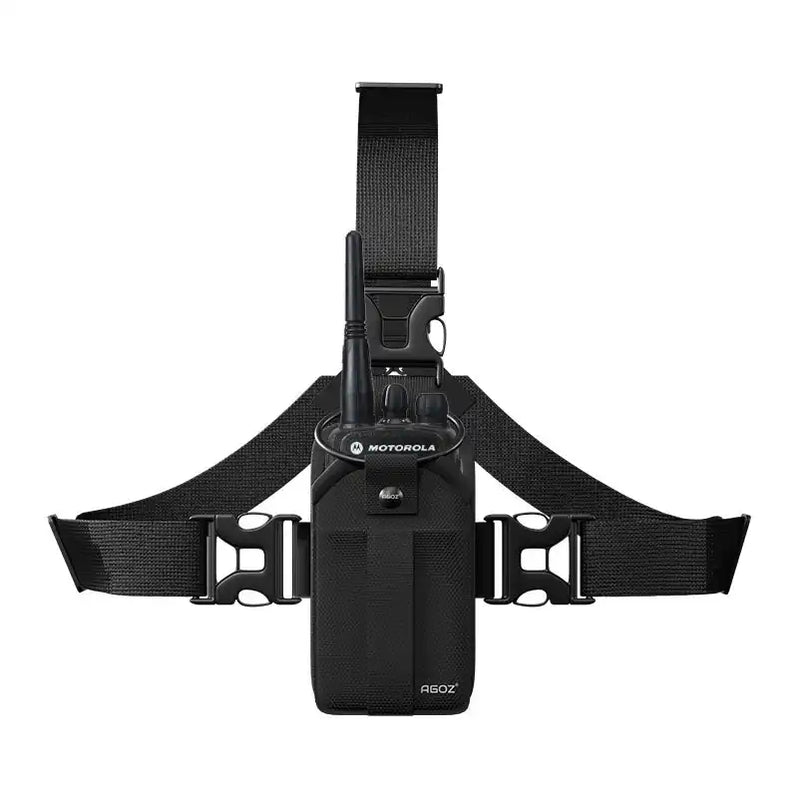If you’re joining us for the first time, this is Part 2 of our series on Belt Clip Case vs. Chest Harness for handheld radios. In Part 1, we covered Pros and Cons of a Belt Clip Case—be sure to check it out Radio Cases: Belt Clip vs. Chest Harness – Which Is Right for You? Part 1 if you haven’t already. Today, we’ll dive into Chest Harness Pros and Cons.
1. Pros
The Agoz Universal Radio Chest Harnesses Holster offers a secure, hands-free way to carry radios, making them a favorite for workers in dynamic or outdoor settings.
- Enhanced Stability: Radios stay securely in place, even during vigorous movement or activity.
- Hands-Free Access: Positioned on the chest for easy and quick retrieval.
- Multi-Purpose Storage: Many chest harnesses include extra pockets for pens, notepads, or other tools.
- Better Weight Distribution: Reduces strain on the waist and hips by distributing the weight across the chest and shoulders.

2. Cons
The Chest Harness Holster for Radio provides hands-free accessibility but isn’t ideal for everyone. Its chest positioning can feel restrictive for some users, and the additional straps may be cumbersome in hot or fast-paced environments.
- Bulkier Design: This can feel restrictive, especially in hot weather or for long shifts.
- Higher Cost: Chest harnesses are often more expensive than belt clips.
- Adjustment Required Needs proper fitting to ensure comfort and prevent slipping.

3. How to Choose Between a Case with a Belt Clip and a Chest Harness Holster
Ultimately, choosing between a belt clip and a chest harness case boils down to your specific needs.
- Consider Your Work Environment: The chest harness offers better security and functionality for rugged, outdoor, or high-motion settings.
- Think About Comfort and Convenience: A chest harness is ideal for long shifts and scenarios where you need extra storage.
- Assess Your Role’s Demands: Warehouse workers or emergency responders may prefer the stability of a chest harness.


